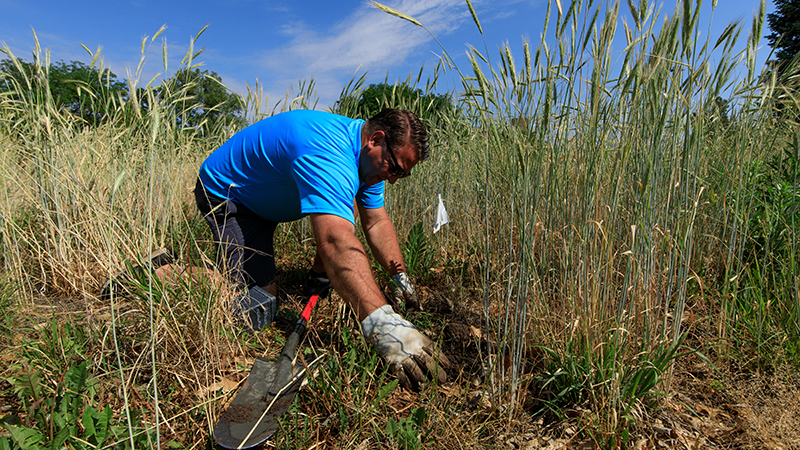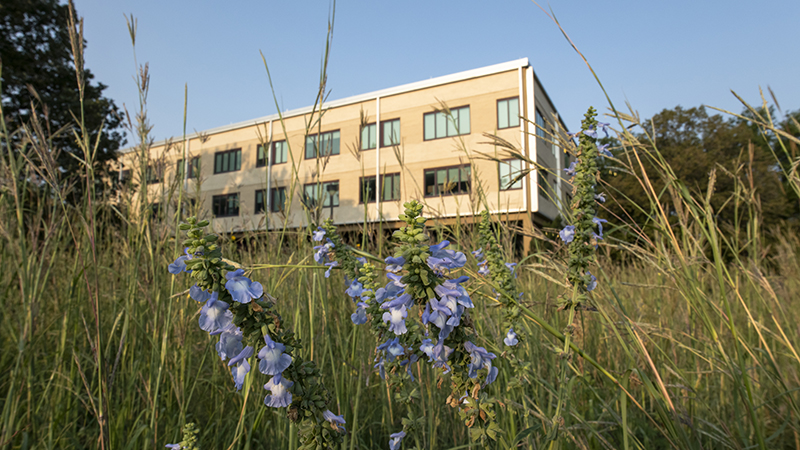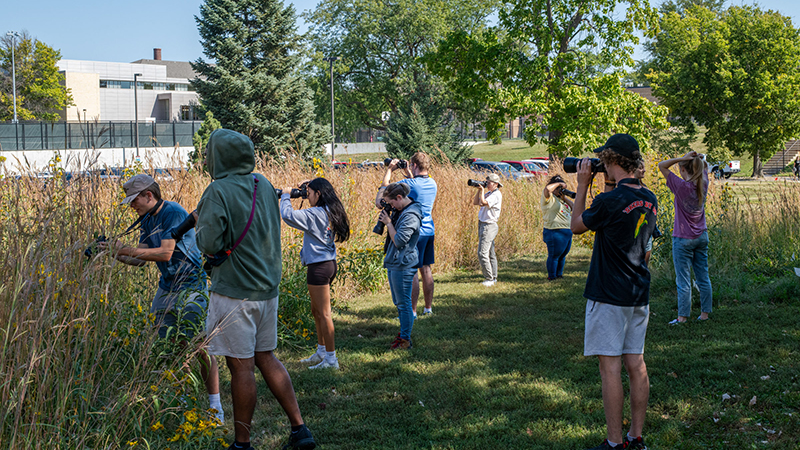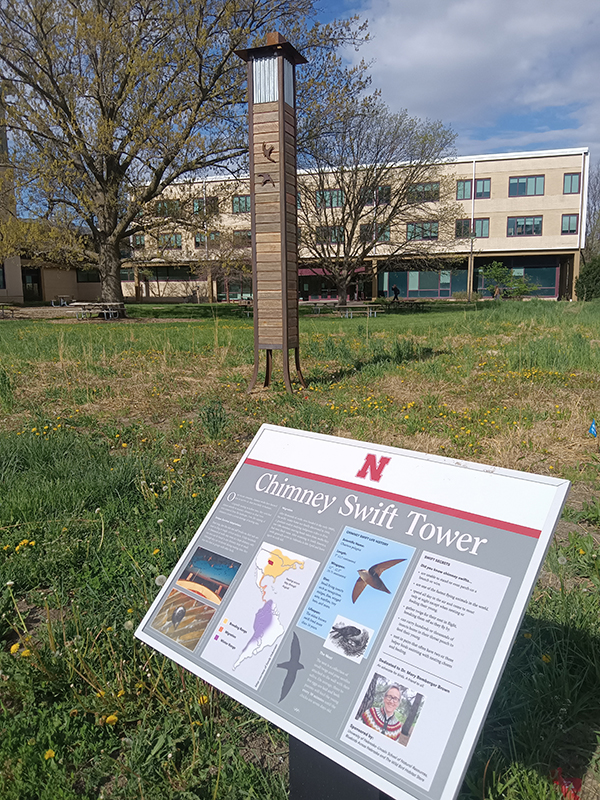
Hardin Hall Prairie
Stand at the edge of this prairie on a day when the world is overwhelming, close your eyes, slow your breath, and let your senses take control. What do you hear? What do you smell? If you are focused, you might experience the forces of a vast expanse of prairie at work, its roots sinking into the ground, or feel a slight breeze moving the grass like an ocean of gold, or hear the hum of insects and the melody of sparrows creating the songs of the plains.
Tallgrass prairie once spanned across the heart of North America, covering a staggering 170 million acres. As European settlers moved west in the 1800s, the tallgrass prairie was plowed to make way for agriculture. Today, about 4% of the original tallgrass prairie ecosystem remains, a mere shadow of its formal self. The tallgrass prairie is a transitional zone between the humid forests of the east and the dry grasslands of the west. Historically, fires set by lightning and Indigenous peoples prevented trees from invading the prairie. Large bison herds also shaped the prairie by moving across the landscape in search of food. Together, the interactions of fire, grazing, and climate maintained heterogeneity and diverse flora and fauna.
In 2021, ecosystem ecologist Dave Wedin and School of Natural Resources colleagues started seeding Hardin Hall’s north lawn with a diverse prairie seed mix covering about a quarter acre. In a typical prairie restoration, the native perennial plants often take three years to become well-established.
Imagine a prairie in three steps of growth:
- a prairie sleeps; prairie seeds and rhizomes lie dormant underground
- then it creeps; roots explore deeply to form a resilient system
- finally, it leaps; powered by precipitation and the sun, prairie plants begin to sprout.
Tall grasses, notably big bluestem, can reach heights of six to eight feet. Indiangrass, little bluestem, and switchgrass are the other dominant grasses.

From a grass monoculture, Hardin Hall’s north lawn has been transformed into a diverse prairie with an artist's palette of colors. In the northeast lawn is an oak savanna containing eight native Nebraska oak and hickory species grown from native seed sources by Great Plains Nursery. Near the building is a diverse local mix emphasizing mid-height and cool-season grasses provided by Prairie Legacy, Inc. To the north is a planting of the High Diversity Local Ecotype seed mix collected by Prairie Plains Resource Institute. This space is a great living laboratory for SNR classes and is a quiet place to study, read, or sit and listen.

Throughout the year, different natural events take place in the Hardin Hall Prairie. When the soil starts to warm, small spring flowers are the first to emerge and young grass shoots may poke through the soil surface. Close observation of the oak species reveals new leaves and compound leaves break from mustard-yellow buds on the bitternut hickories. As temperatures rise and summer storms pass overhead, grasses begin their journey skyward. Ants use plant stems as causeways on scouting trips, and bumblebees sip nectar from wild bergamot. In the mid-summer prairie butterfly milkweed and pale coneflower begin bloom. The below-ground roots of prairie plants are restocked with nutrients in the fall to overwinter, and most animals will either migrate or hibernate. The prairie grasses take on beautiful tones of red and orange in fall. Late-blooming flowers like goldenrods and asters can be found. On a cold winter day, the prairie may look lifeless, yet it lies dormant with roots protected underground. The snow reveals tracks of small birds or mammals. A heavy blanket of snow helps flatten the dead plants for the arrival of spring regrowth.
Nebraska’s remaining tallgrass prairies are like postage stamps on the landscape, largely unconnected yet still providing habitats for some of North America’s most imperiled species. The Hardin Hall prairie demonstrates these prairie species can still play a role as our urban infrastructure expands. Benefits include greater diversity of animal and plant life, improved soil health, storing carbon, cleaning water, cultural significance, and reconnecting us with the intricacies of nature and its seasonal rhythms.
The Hardin Hall Prairie was made possible with financial support from School of Natural Resources, the University of Nebraska-Lincoln’s Landscape Services, and the support of Jeff Culbertson, Eileen Bergt, and John Carroll.
Location

The Hardin Hall Prairie is located on the north side of Hardin Hall on East Campus of the University of Nebraska-Lincoln.
A Year in the Life of Hardin Hall Prairie

"A leafhopper pounces on my white, smudged-up vans. I crouch in the grass to admire him, but he whips away into the bluestem and Indian grass. In the countless hours I’ve spent in the prairie, I’ve watched it transform. Every year, a frigid crust of snow melts to reveal muddy sprouts poking through the earth’s surface. Those sprouts burgeon into an emerald summer sea of grasses towering eight feet tall. Then, as the students return, the grasses fade into shades of plum and copper, and gumweed heads curl up for a winter slumber. The cycle begins anew." — Marissa Lindemann
Prairie Points

The chimney swift tower was donated by Bluebirds Across Nebraska and our friends at Wild Bird Habitat Store in Lincoln.
Prairie Treasure Hunt
Randomly displayed images of things on the prairie and challenging the visitor to find them.